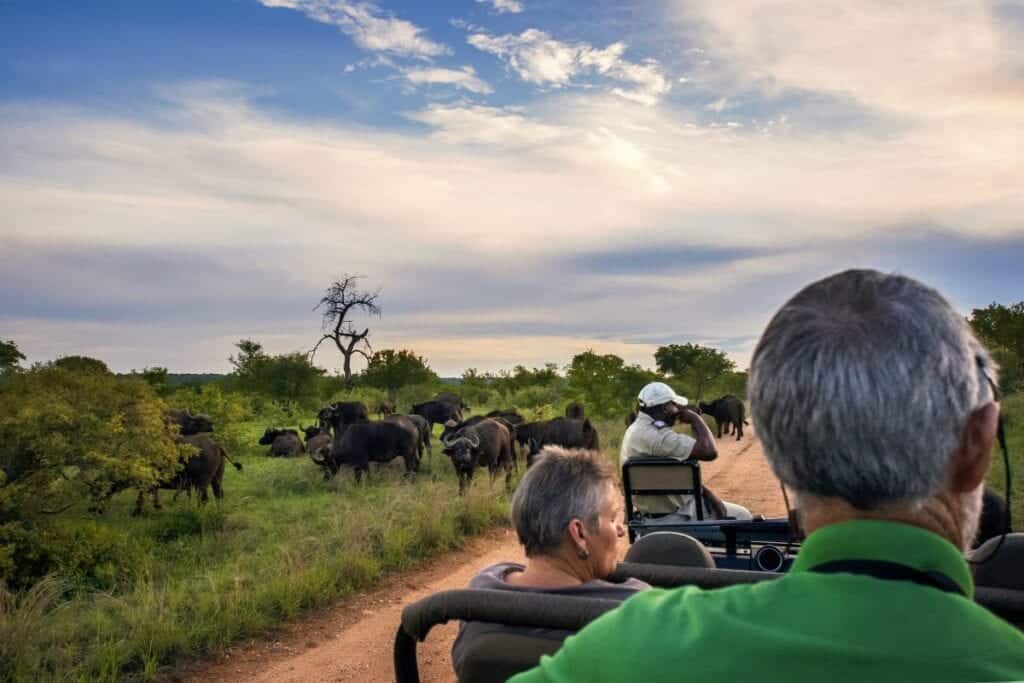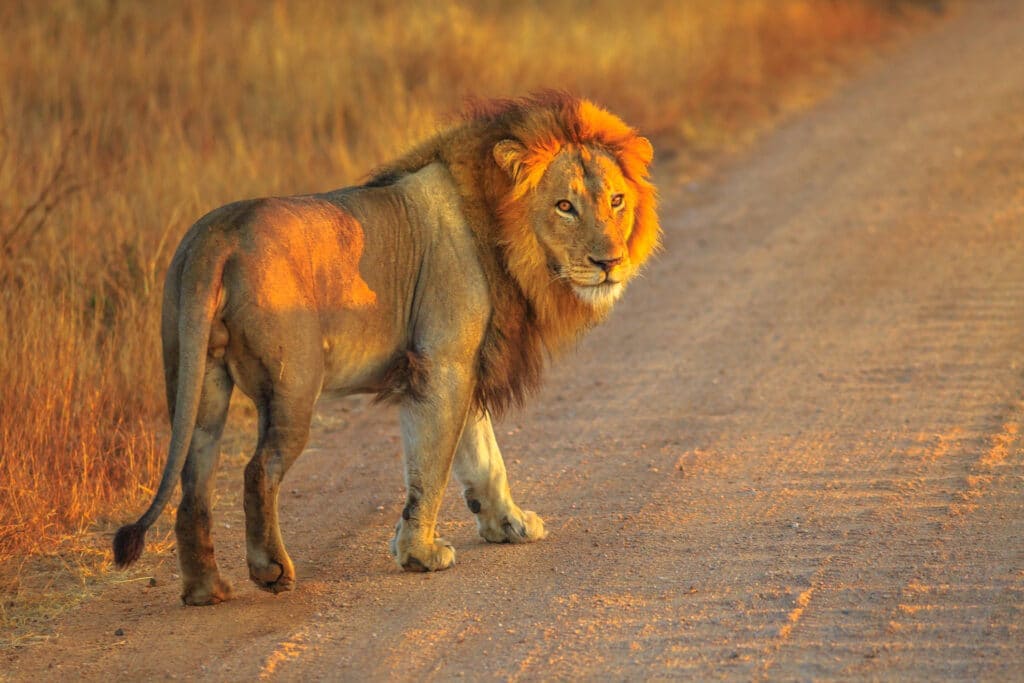Planning the best time to visit Kruger National Park can enhance your safari experience significantly. Here’s a detailed guide to help you choose the ideal time based on weather, wildlife sightings, and overall conditions:
Dry Season (May to September)

Overview: The dry season is considered the best time for wildlife viewing in Kruger. The lack of rain means animals congregate around water sources, making them easier to spot.
Weather:
- Temperature: Daytime temperatures range from 22°C to 27°C (72°F to 81°F), while nighttime temperatures can drop to 4°C to 12°C (39°F to 54°F).
- Rainfall: This period sees very little rain, resulting in sparse vegetation and better visibility for wildlife spotting.
Wildlife Sightings:
- Big Five: Increased chances of spotting the Big Five as animals gather around rivers and waterholes.
- Bird Watching: Although not peak bird-watching season, you can still see a variety of resident species.
Pros:
- High wildlife concentration around water sources.
- Pleasant temperatures during the day.
- Fewer mosquitoes and lower risk of malaria.
Cons:
- Cooler nights and mornings require warm clothing.
- The dry landscape may not be as visually appealing as the lush green of the wet season.
Wet Season (October to April)

Overview: The wet season is characterized by lush landscapes and an abundance of birdlife. This is the best time for birdwatching and seeing newborn animals.
Weather:
- Temperature: Daytime temperatures range from 25°C to 33°C (77°F to 91°F), with high humidity. Nighttime temperatures are mild, ranging from 15°C to 20°C (59°F to 68°F).
- Rainfall: Expect afternoon thunderstorms, particularly from December to February. The rain transforms the park into a verdant paradise.
Wildlife Sightings:
- Bird Watching: This is the peak season for birdwatching, with many migratory species present.
- Newborn Animals: Many animals give birth during this period, providing opportunities to see young wildlife.
Pros:
- Lush, green landscapes.
- Excellent bird watching opportunities.
- Lower tourist numbers, leading to a more exclusive experience.
Cons:
- Higher temperatures and humidity.
- Increased mosquito activity and higher risk of malaria.
- Dense vegetation can make wildlife spotting more challenging.
Key Considerations for Each Month:

May to September (Dry Season):
- May: Cooler temperatures begin; good visibility for game drives.
- June to August: Coldest months, especially at night; peak wildlife viewing.
- September: Warming up; animals still concentrated around water sources.
October to April (Wet Season):
- October: Start of the wet season; park begins to turn green.
- November to February: Hottest and wettest months; best for birdwatching and seeing newborns.
- March: End of the wet season; still green and lush.
- April: Transition month; cooler temperatures and decreasing rainfall.
Each season in Kruger National Park holds its own reward for nature enthusiasts and first-time visitors. One thing is certain about a Kruger National Park safari: with so much to see and do, you’ll find yourself booking this adventure again and again.